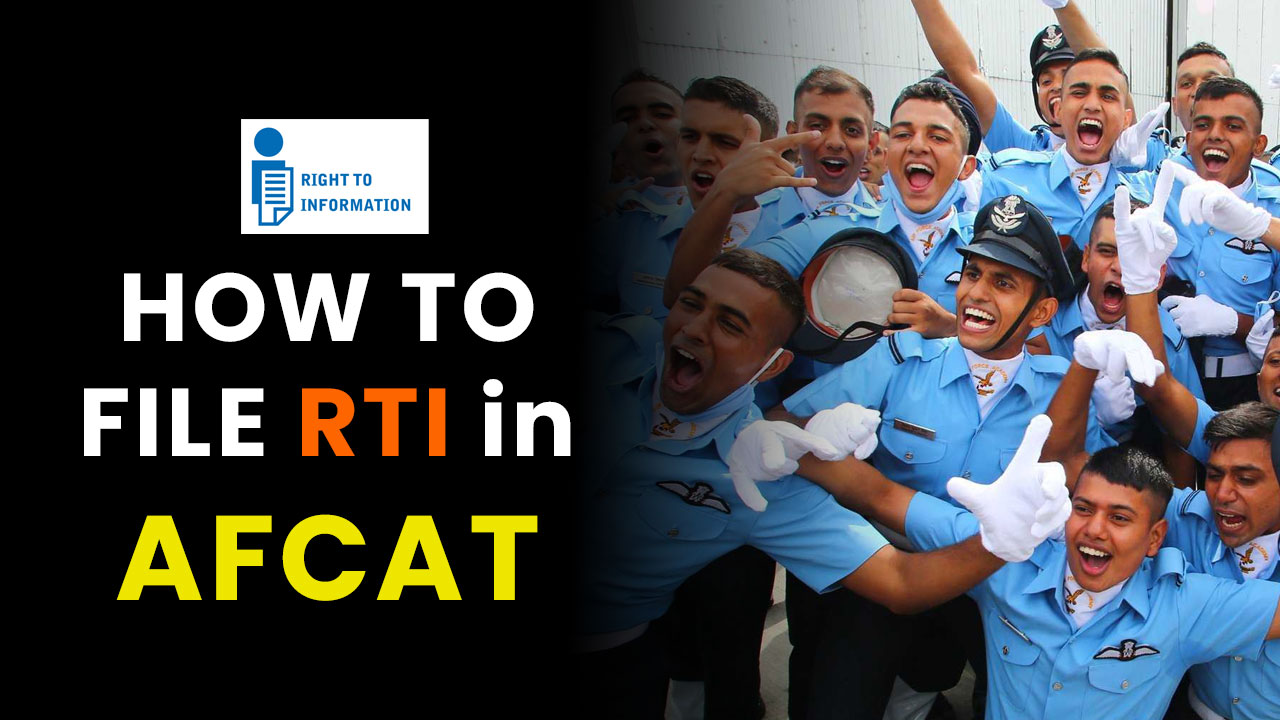Filing an RTI (Right to Information) request to obtain your AFCAT (Air Force Common Admission Test) result and mark sheet is a straightforward process. The RTI Act of 2005 enables Indian citizens to request information from any public authority, which is obliged to reply expeditiously or within thirty days.
Here’s a step-by-step guide to help you file an RTI for your AFCAT result and mark sheet:
IAF aspirants demand AFCAT answer keys to maintain Transparency
— SSBCrack (@SSBCrack) March 9, 2024
Following the announcement of the AFCAT 1 2024 results, numerous candidates are calling for the release of the answer key and their respective question papers to ensure transparency, as dissatisfaction with their… pic.twitter.com/tE0D1OXdHK
Why aspirants want to file RTI after AFCAT Result
Aspirants might want to file an RTI (Right to Information) request after the AFCAT (Air Force Common Admission Test) results for several reasons, primarily revolving around transparency, clarification, and personal performance evaluation. Here are the main reasons:
1. Transparency:
Filing an RTI is a way to ensure transparency in the examination process. Candidates seek to understand how their answers were evaluated, the criteria used for marking, and the cut-off for selection. This transparency helps build trust in the examination system.
2. Verification of Marks:
Candidates may want to verify their marks to ensure that there was no error in the evaluation process. Sometimes, discrepancies in scoring can occur, and an RTI request can help in obtaining detailed information, which might lead to re-evaluation or correction of marks.
3. Understanding Cut-off Scores:
The cut-off scores for AFCAT vary each year based on various factors such as the number of candidates, the difficulty level of the examination, and the number of available positions. Candidates often seek detailed information on how the cut-off scores were determined to assess their performance against a transparent benchmark.
4. Clarification on Selection Criteria:
Aspirants might file an RTI to get clarification on the selection criteria and the weightage given to different sections of the exam. Understanding these nuances can help candidates prepare better for future attempts.
5. Feedback for Future Preparation:
Accessing detailed information about their performance and the overall examination process can provide valuable feedback for candidates. This information can help them identify their strengths and weaknesses, allowing them to focus their preparation more effectively for future attempts.
6. Resolving Doubts and Queries:
Sometimes, the official communication might not cover all the details that a candidate might be curious about, such as the normalization process (if any), specifics about the evaluation criteria, or the rationale behind the allocation of marks. An RTI can help in obtaining answers to these specific queries.
7. Legal Recourse:
In rare cases, if a candidate believes there has been unfair treatment or an anomaly in the examination process, filing an RTI and obtaining official documentation is the first step towards taking legal recourse.
Filing an RTI after the AFCAT results allows candidates to address these concerns directly with the authorities responsible for the examination. It empowers them with the right to information, ensuring that the selection process is conducted fairly and transparently.
How to file RTI for AFCAT
1. Identify the Public Information Officer (PIO)
- The first step is to identify the PIO of the Indian Air Force or the department responsible for the AFCAT exam. The contact details of the PIO are usually available on the official website of the Indian Air Force or the AFCAT.
2. Write the RTI Application
- Draft your RTI application either in English, Hindi, or the official language of your area. While there’s no specific format mandated for the application, some states do have a prescribed form. Your application should be clear and specific about the information you seek (e.g., AFCAT result and mark sheet for a particular examination cycle).
3. Pay the Application Fee
- An application fee is required, which can vary by state. This can be paid via Indian Postal Order (IPO), Demand Draft (DD), court fee stamp, or online (if the option is available). The fee details and payment method should be checked on the official AFCAT or Indian Air Force website.
4. Send the Application
- You can send your RTI application by post or submit it online, if available, through the official RTI portal of the Indian government or the relevant state’s portal. When sending by post, it’s advisable to use Registered or Speed Post for tracking purposes.
5. Await the Response
- The PIO is required to respond to your RTI application within 30 days from the date of receipt. If the information concerns the life or liberty of a person, the response is required within 48 hours.
6. Appeal if Necessary
- If you do not receive a response within the stipulated time or are dissatisfied with the information provided, you can file a first appeal. The first appeal should be addressed to the appellate authority specified in the RTI Act. If the first appeal does not bring a satisfactory outcome, a second appeal can be filed with the Central Information Commission (CIC) or the respective State Information Commission.
Additional Tips:
- Be specific and clear about the information you are seeking.
- Keep a copy of your application and any correspondence for your records.
- Mention your contact details clearly in the application.
This process is designed to make governmental operations transparent, allowing citizens to access information that affects them.
For more help, do not hesitate to reach us at [email protected]





















